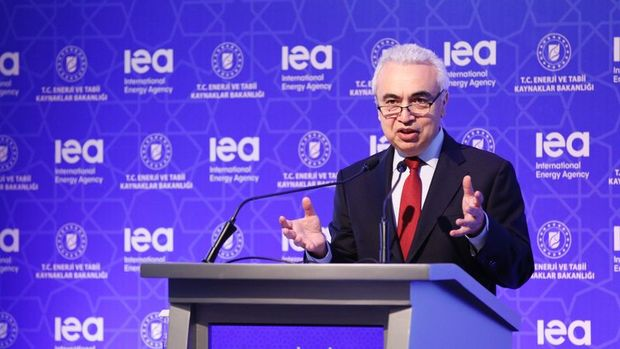UEA President Birol: There will be no very high increase in oil prices
Fatih Birol, the head of the International Energy Agency (IEA), stated that considering market fundamentals, a very high increase in oil prices is not foreseen unless one or more major oil producing countries are directly involved in the tensions in the Middle East. Birol told AA that oil prices, which have reached around $90 in international markets, pose a serious risk for many countries, and that this could particularly support inflationary pressures in the world. Noting that market fundamentals are extremely reasonable, Birol said, "The reason oil prices are so high is not market fundamentals, because oil demand is at an extremely reasonable level compared to 2022 and 2023. The increase in global oil demand is around 1 million barrels per day." Recalling the strong oil supply expected in the US, Canada, Brazil and Guyana, Birol stated that production is at a sufficient level considering demand. Referring to the production cuts by the Organization of the Petroleum Exporting Countries (OPEC) and the OPEC+ group, which consists of some non-OPEC producer countries, Birol said, “The fact that prices have reached around $90 is due to the deliberate reduction of oil production by the OPEC+ countries led by Saudi Arabia. These cuts are based on the group’s policy of keeping oil prices high.” Pointing out that the increasing geopolitical tension in the Middle East is also effective in the increase in prices, Birol said, “If one or more major oil producing countries are not directly involved, I do not think prices will rise to much higher levels.” The barrel price of Brent crude oil, which is accepted as the international reference, had recently exceeded the $90 threshold in international markets due to the increasing tension in the Middle East and reached its highest levels since October 2023. Current market fundamentals According to the latest monthly oil market report published by the IEA, global oil supply is calculated to reach 102.9 million barrels this year, an increase of 770 thousand barrels per day compared to the previous year. This year, non-OPEC+ production is expected to increase by 1.6 million barrels per day, while OPEC+ group production is expected to decrease by 820 thousand barrels per day as voluntary cuts continue. According to the report, which draws attention to the fact that global oil demand growth is currently in the middle of a slowdown, demand is expected to increase by approximately 1.2 million barrels per day this year, to 103.2 million barrels. While markets are expecting a tighter supply-demand balance, the growth in demand is expected to be met by production from non-OPEC+ countries such as the US, Brazil, Canada and Guyana.


